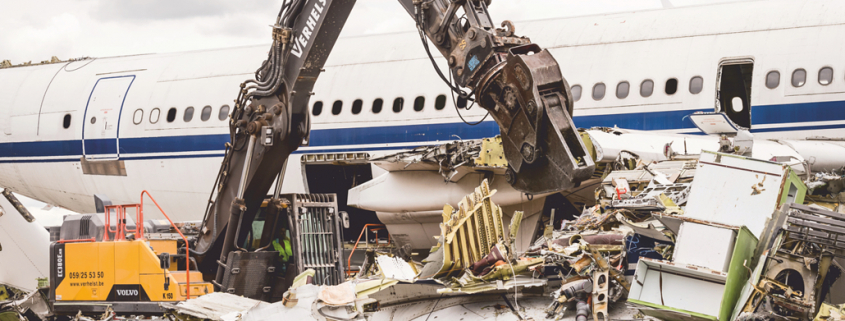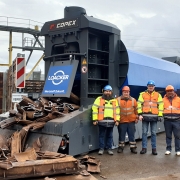The Market for Commercial Aircraft Disassembly, Dismantling and Recycling
Market research and consulting company Visiongain predicts strong growth for this sector.
According to the analysis of Visiongain Research Inc., the global commercial aircraft disassembly, dismantling and recycling market is expected to reach 8,138.78 million US-Dollar in 2026 from its previous value of 6,742.76 million US-Dollar in 2021. Visiongain further anticipates that this worldwide market will reach 10,009.49 million US-Dollar in 2031.
“No one paid any attention to the decommissioned commercial aircraft stored on the outskirts of distant airfields for decades,” the firm stated in a press release. “Engines, turbine components, avionics, and landing gear may all be used as spare parts, and fuselage sections include recyclable metals like titanium, copper and aluminum.”
Taking an entire airplane apart, sorting all of the components by kind, and reprocessing them is a skill in and of itself. Engines and landing gear, for example, must be carefully removed before being harvested for spare components, the firm described the process. The same applies to all impurities, such as extinguishing chemicals, kerosene, and oils.
Recycling businesses were hired to handle the scrap, shredding the parts and segregating the different materials. “It is feasible to recover a number of metals and complicated alloys in this way, which industrial businesses can then employ to create new goods. Temperature-resistant super alloys comprising titanium and nickel, which may be reused by the aerospace industry, can be extracted from aircraft scrap. Incineration is used for any substance that cannot be recycled.”
Every change in the way planes are built presents new hurdles for recyclers, Visiongain informed. The fuselages of airplanes destined for scrap were previously composed of aluminum, which is easily recyclable. “However, aircraft makers are increasingly relying on lightweight fiber-reinforced composites, particularly carbon fiber reinforced polymers (CFRPs), to save weight. These CFRPs will likewise have to be dismantled and treated on a massive scale at some point.”
New life for carbon fiber reinforced polymers
Carbon fiber reinforced polymers can also be recycled in most cases. However, so far, this has proven to be more challenging and costly than incineration, Visiongain gave account. Epoxy resin, in which the fibers are embedded, is a common polymer used in airplane construction. Reclaiming the fibers would entail separating the epoxy resin from the fibers in the absence of oxygen, which necessitates the use of specialized equipment. The recycling of pricey carbon fiber reinforced thermoplastics was a less technological barrier.
Material traceability and sorting
As reported, material traceability and sorting is a long-term solution. “This procedure is utilized to improve the facility’s recycling rates and reduce trash. Material traceability and sorting is a time-consuming process that necessitates the employment of trained personnel to separate the usable aircraft components.” When recycling businesses have to document every stage of the supply chain in addition to collecting and gathering data, it may be inconvenient. “This issue may lead to poor supply chain management for aviation components and parts.”
A sample of the report can be downloaded here: www.visiongain.com/report/aircraft-disassembly-market-2021/#download_sampe_div
(Published in GLOBAL RECYCLING Magazine 3/2021, Page 10, Photo: SCHROTT24)







